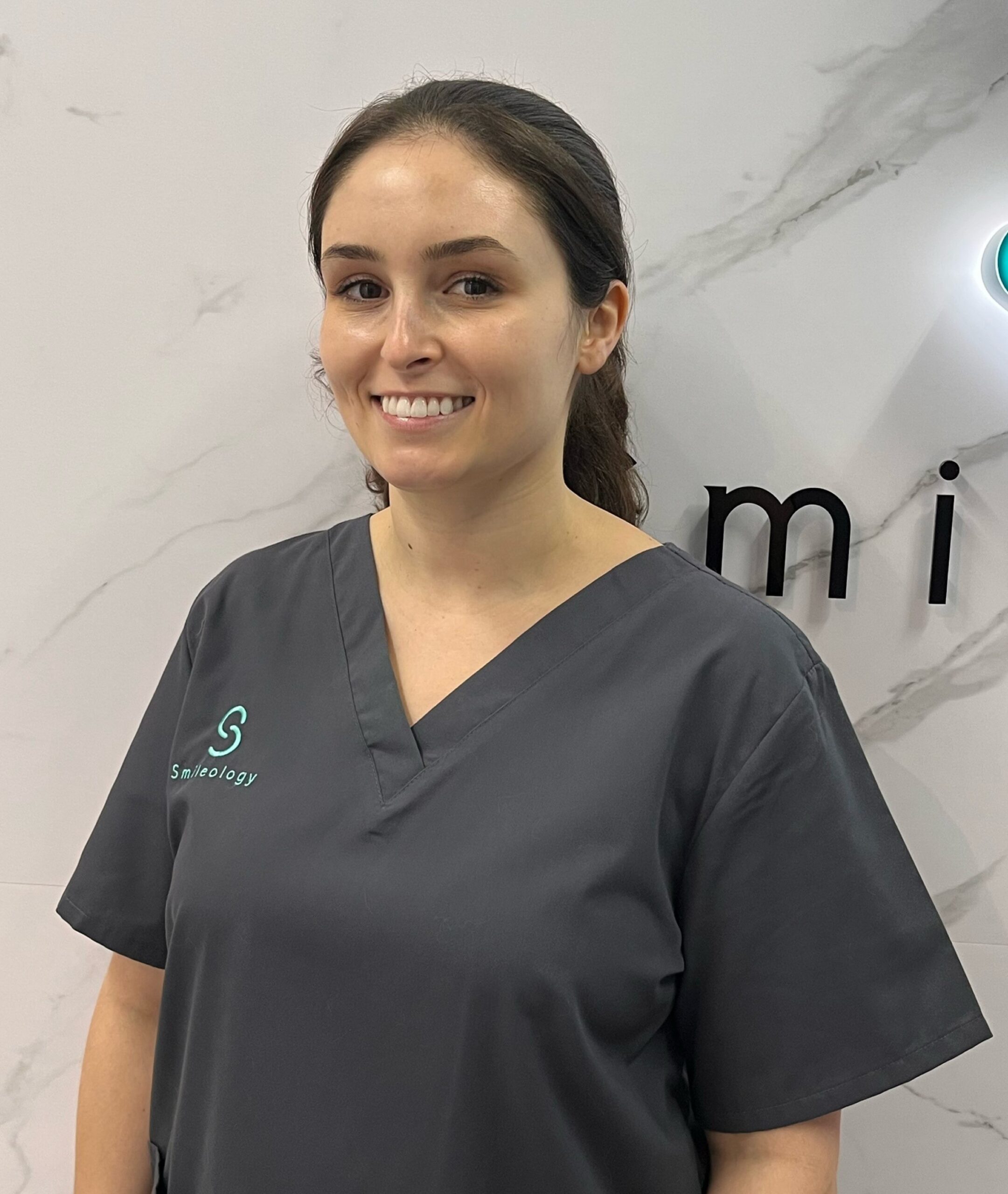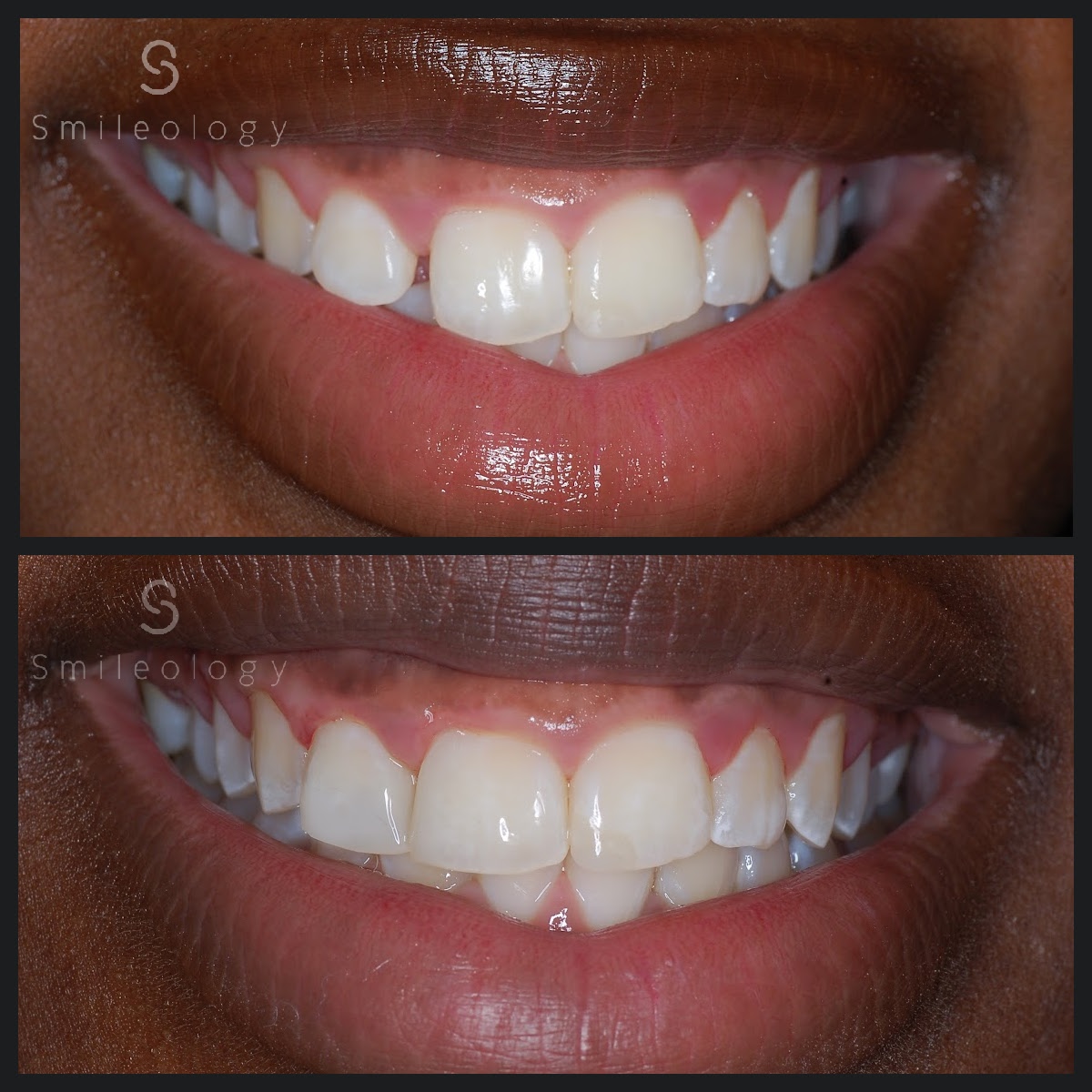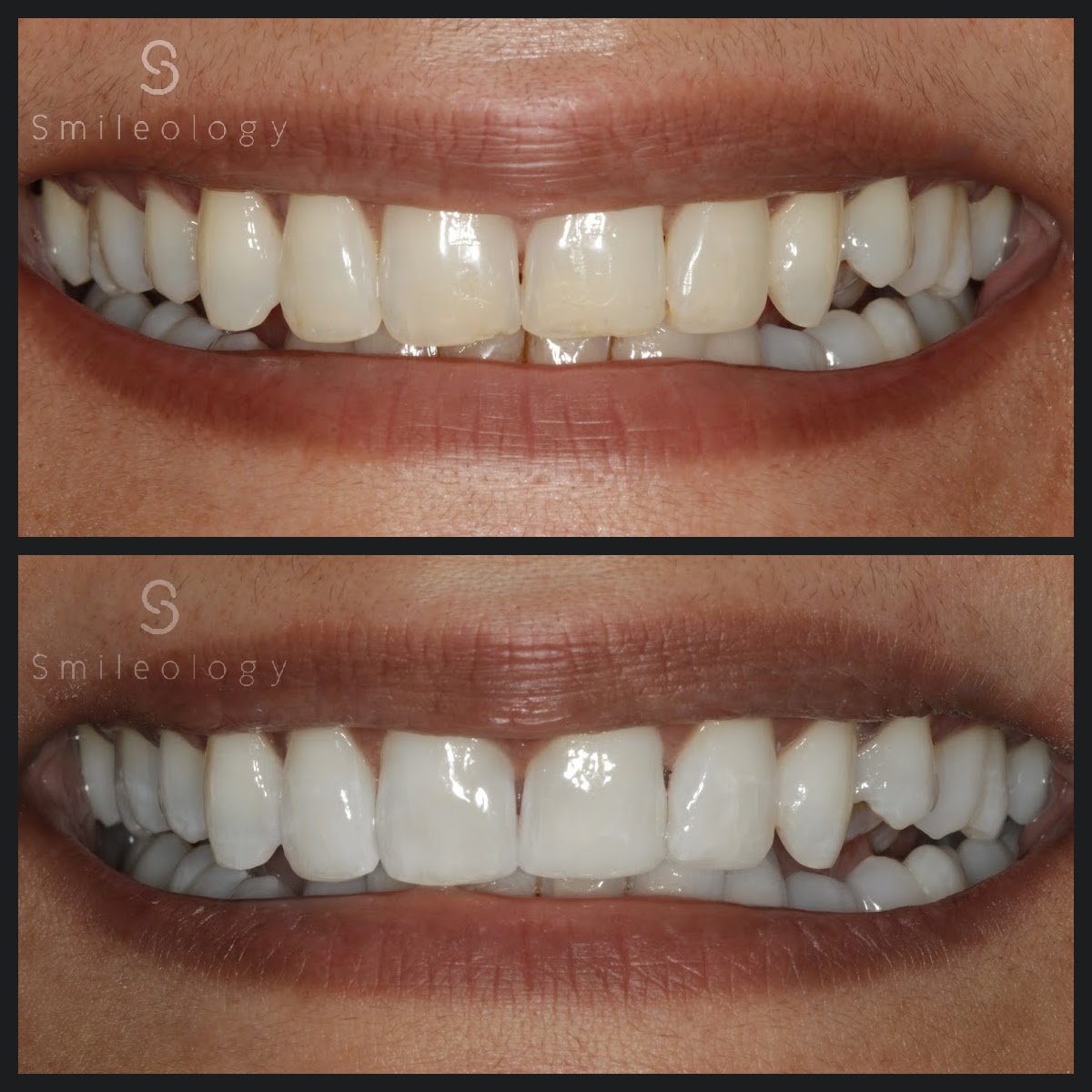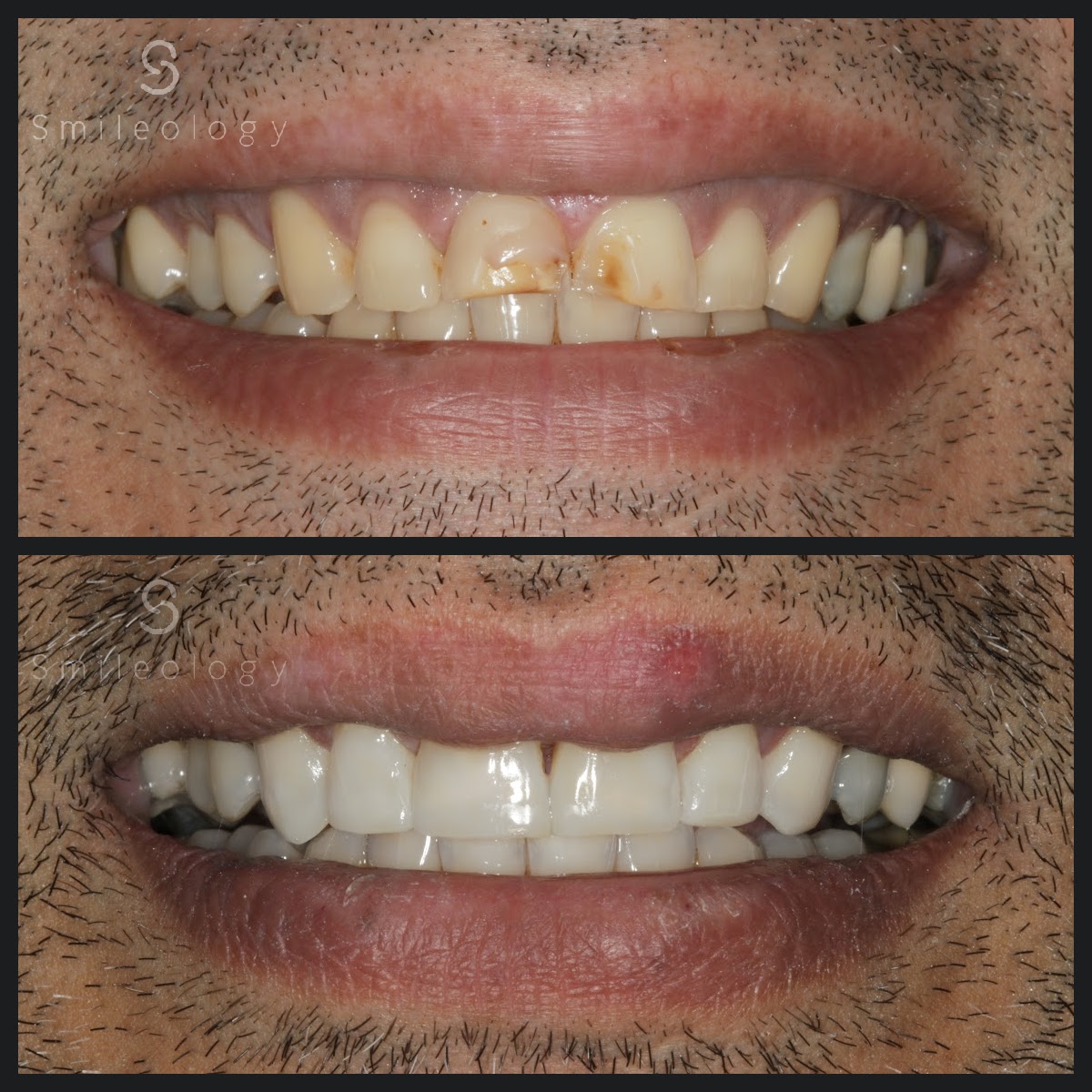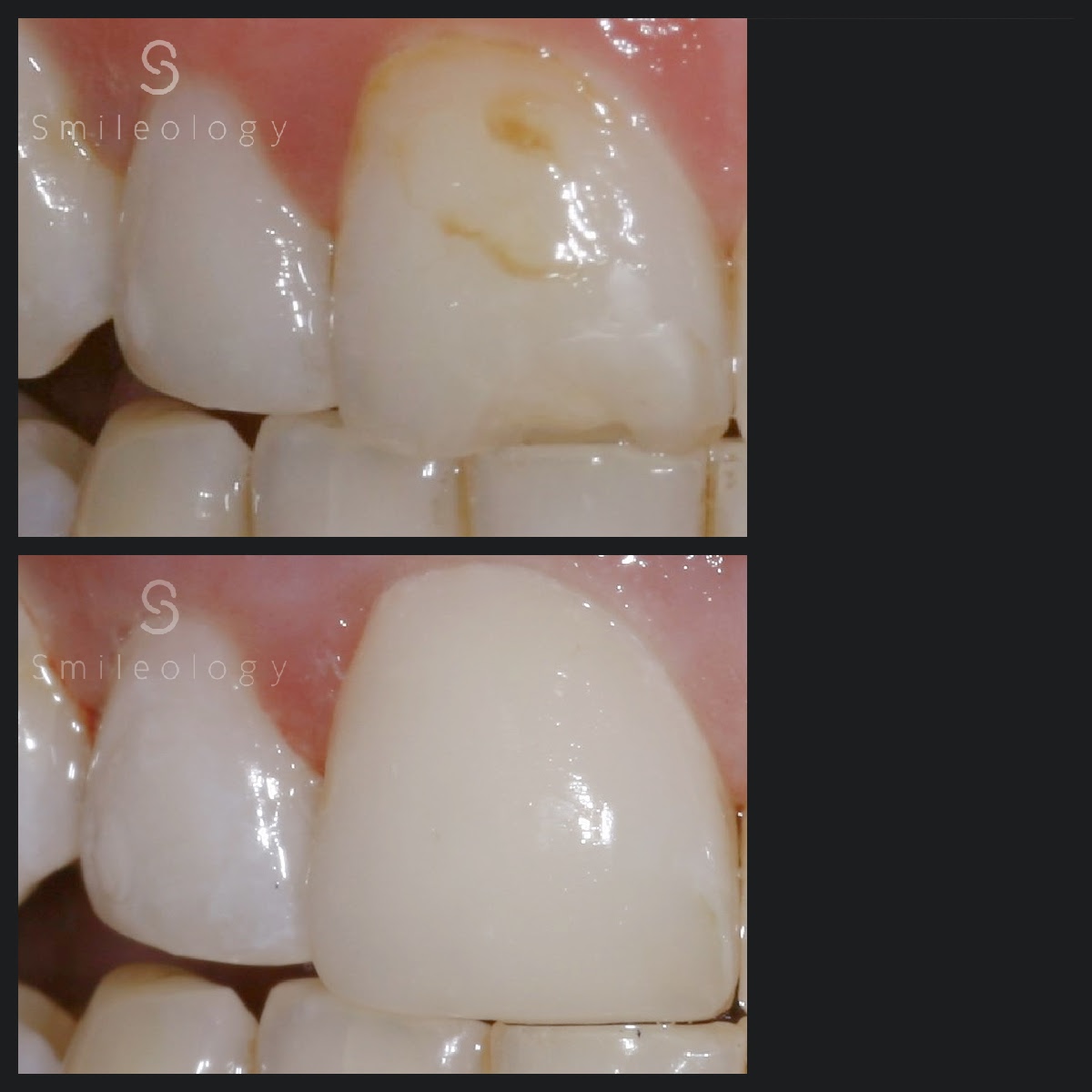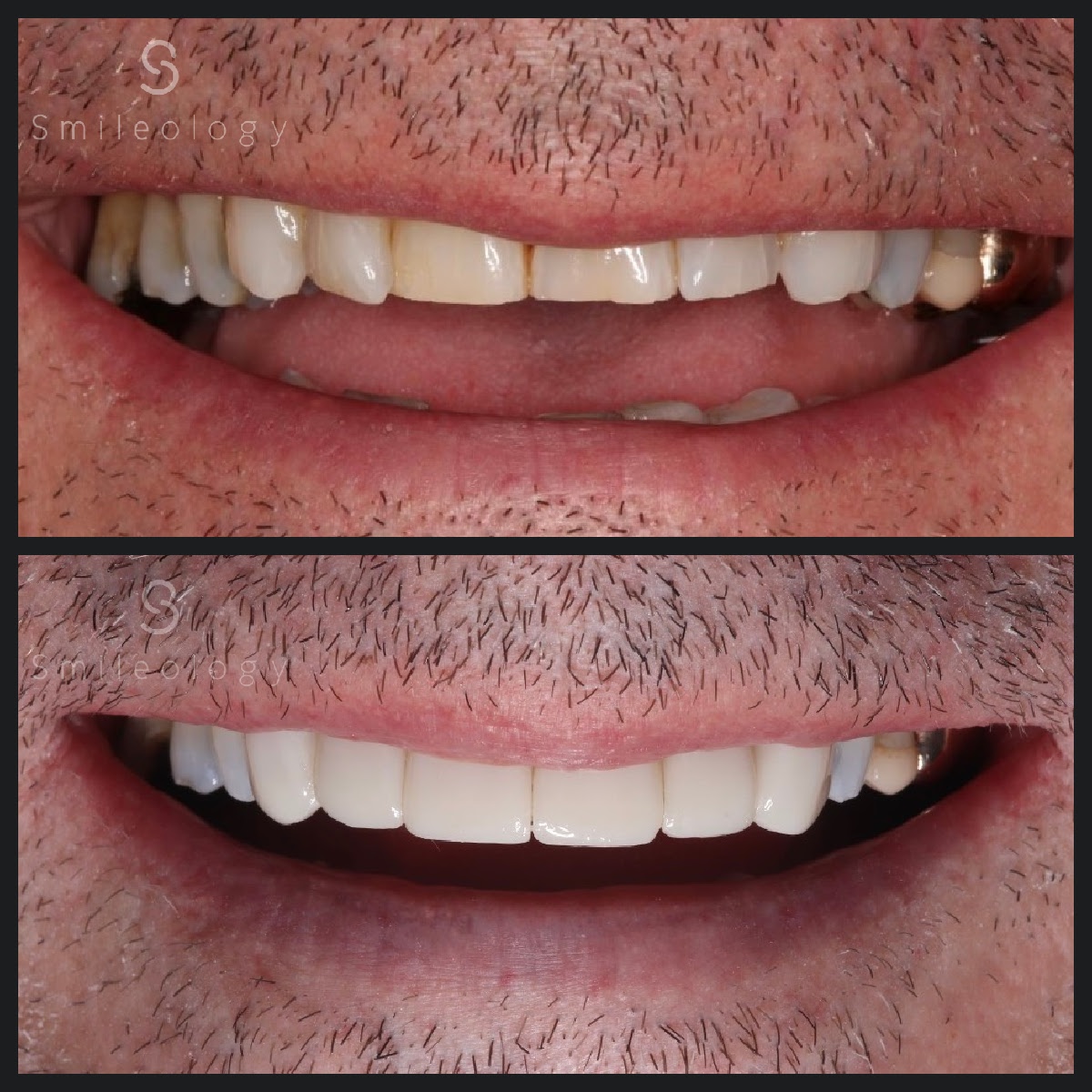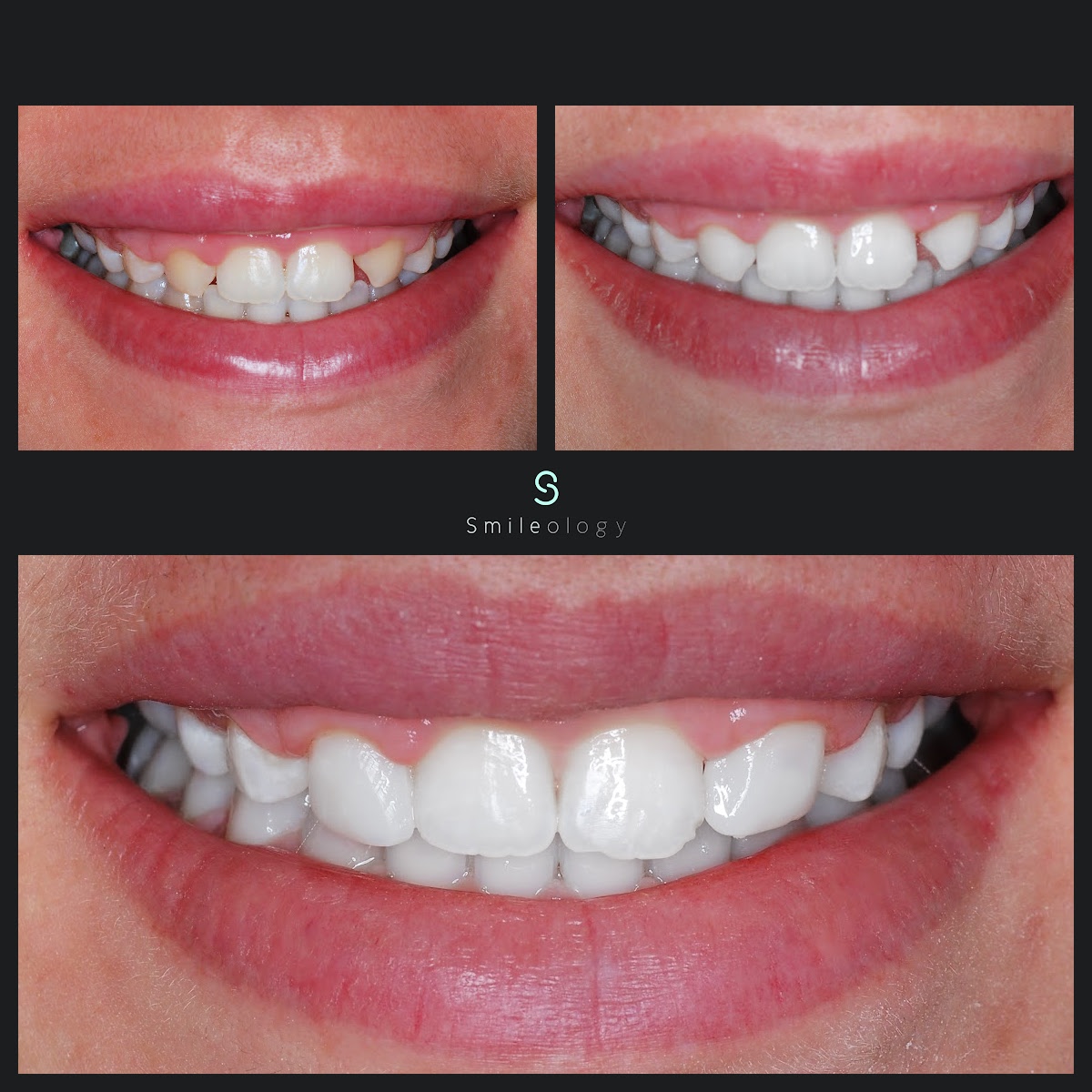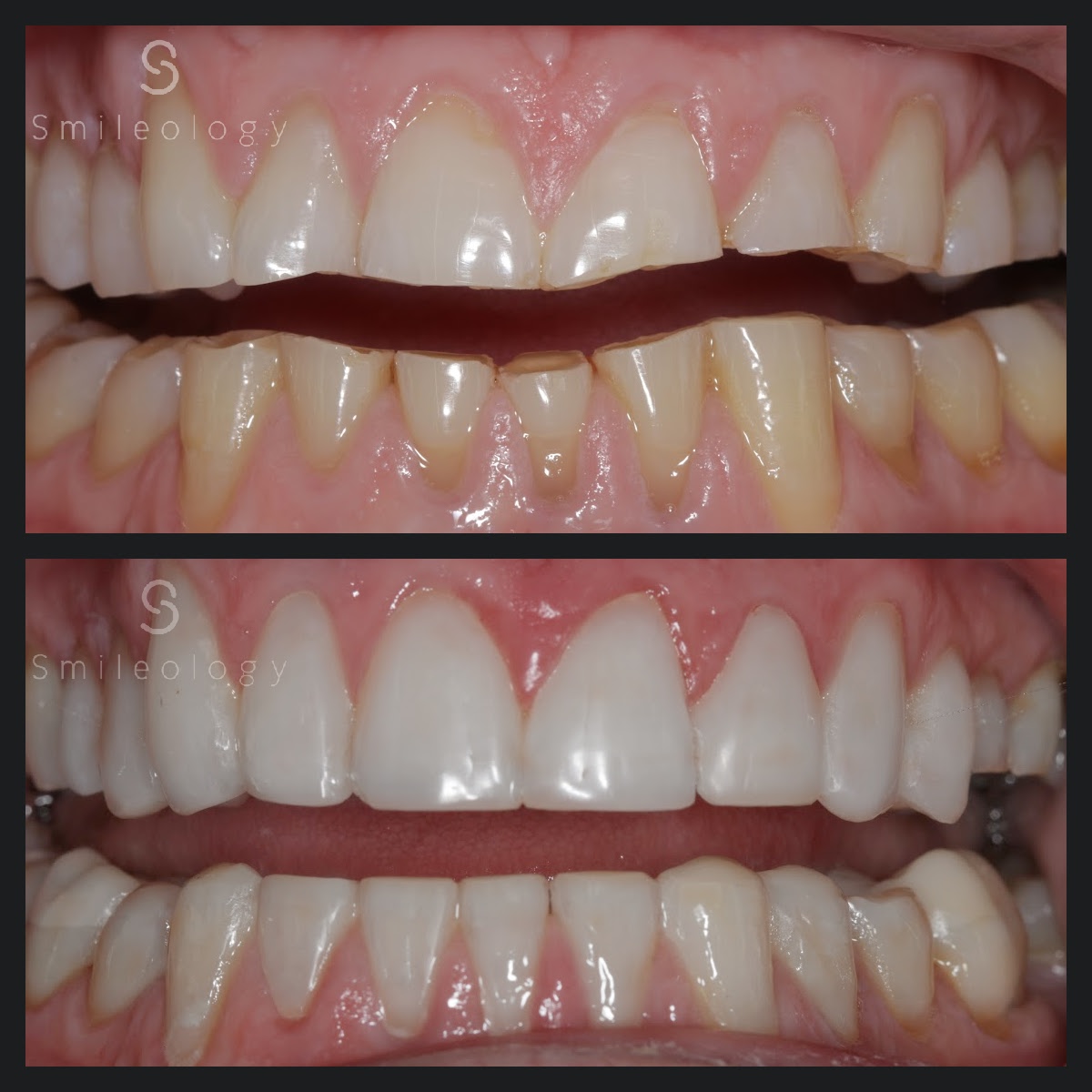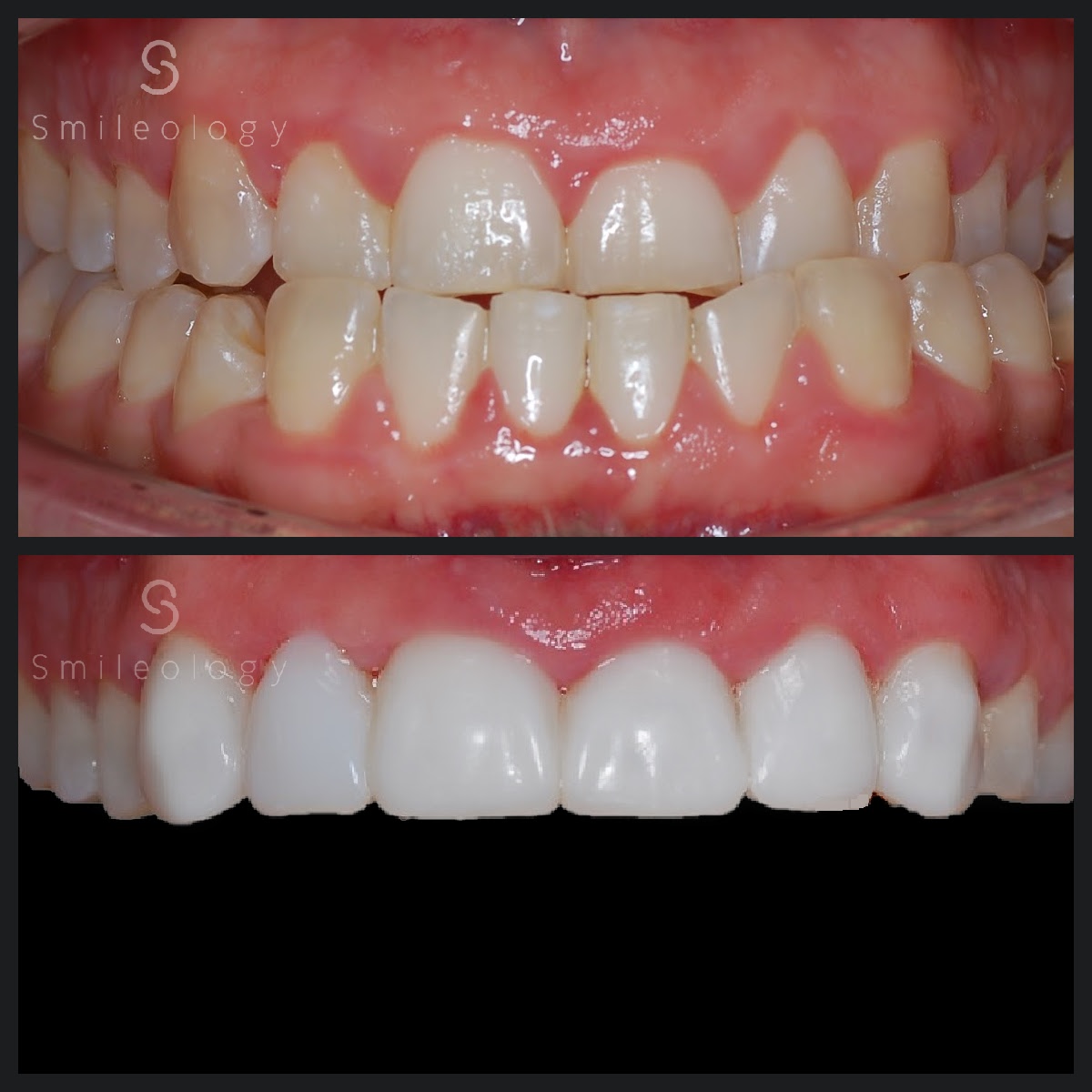
At Smileology, we are committed to providing the best treatment options for our patients by investing in advanced dental technology. We pride ourselves on offering modern, effective solutions in a comfortable environment. Here are some of the latest technologies we use:
digital smile design
What is the DSD?
Digital Smile Design (DSD) allows dentists to craft personalised dental treatments, delivering exceptional results that are precisely tailored to each patient. From straightforward teeth whitening to complex full-mouth rehabilitations.
DSD is versatile and can be used to address many different issues such as
- Aligning misaligned teeth
- Closing gaps between teeth
- Enhancing teeth color for a brighter smile
DSD allows the creation of crowns, bridges, and dentures with great detail and accuracy. This innovative approach ensures both aesthetic beauty and functional excellence in dental care.
How does it work?
- Initial Consultation: You’ll meet with one of our dentists to discuss your concerns, goals, and expectations for your smile.
- Clinical Evaluation: The dentist will perform a comprehensive dental examination, including assessing the teeth, gums, bite alignment, and facial aesthetics.
- Digital Imaging: Advanced technology, such as digital photography and videography, captures detailed images and videos of your face, smile, and teeth.
- Design Phase: Using specialised software, the dentist analyses the digital images and videos to create a customised smile design. This design takes into account factors such as tooth shape, size, symmetry, and overall facial harmony.
- Simulation: Your dentist will utilises the software to simulate the proposed changes. Allowing you to visualise the expected outcome and make any necessary adjustments before proceeding with treatment.
- Mock-up or Prototype: In some cases, a mock-up or prototype of the proposed dental restorations (e.g., temporary veneers or crowns) may be created to provide a tangible preview of the final result.
- Treatment Planning: Based on the finalised smile design, the dentist develops a detailed treatment plan. This plan may include procedures such as teeth whitening, veneers, crowns, orthodontics, or other cosmetic and restorative treatments.
- Treatment Execution: The actual dental procedures are performed according to the treatment plan, ensuring that the designed smile transformation is achieved with precision and accuracy.
- Post-Treatment Evaluation: After completing the treatment, the dentist evaluates the final results to ensure that the desired aesthetic and functional outcomes have been achieved. Adjustments may be made if necessary.
cbct - 3D DIGITAL IMAGING
What is CBCT Imaging?
CBCT(Cone Beam Computed Tomography) is a medical imaging technique. We are able to produce high quality 2D and 3D images of the teeth, bones and surroundings structures with our state of the art CBCT scanner, making it possible to improve diagnosis and plan treatments with pinpoint accuracy; vital in oral surgery, orthodontics, treatment planning and diagnosis in implant dentistry.
PRGF
What is PRGF?
PRGF-ENDORET™ technology isolates healing proteins from a small sample of the patient’s blood, which is then applied directly to the area of the wound. By doing this it stimulates fast healing, reduces discomfort and fosters new bone growth and repairs soft tissue in surgical sites. This technique is already being used very successfully to aid recovery times in many different areas of surgery including maxillofacial, cardiac, plastic and reconstructive. These advantages are now available to those seeking to replace missing teeth with dental implants.
Advantages of PRGF
- Treatment has gained European (CE) and American (FDA) approval
- Completely biocompatible and safe
- Reduced inflammation and pain
- Advanced technology backed by a wealth of experience and clinical testing
- Proven success rate in varied medical applications
- Outstanding clinical efficiency as illustrated in many clinical publications.
CEREC - The same day crown
What is CEREC?
CEREC is a state of the art method of reconstructing tooth restoration. CEREC uses computer assisted design (CAD) and computer aided manufacturing (CAM) to offer same day restorations for patients.
This advanced dentistry technology has revolutionised ceramic restorations such as crowns and veneers for patients so there is no longer a wait between preparing the restoration and then fitting the crown. The advanced dentistry technology is used whilst you are sitting in the dental chair, which is more convenient for both patient and dentist. The restorations are metal-free and tooth coloured to restore your tooth to its natural beauty, strength and function.
The Benefits:
- Same Day fit.
- No need for messy impressions
- No need for temporary restoration in between visits
- Ability to save as much natural tooth structure as possible
- Restores teeth to natural beauty, strength & function
- Longer lasting restorations – may last over 10 years
- Metal free restorations
iTERO
What is iTero?
iTero is a state-of-the-art digital scanning system used in dentistry and orthodontics. It captures detailed 3D images of your teeth and gums, eliminating the need for traditional dental impressions.
Advantages of iTero
- Enhanced Accuracy: Provides precise digital impressions, leading to better-fitting restorations and orthodontic appliances.
- Comfort: More comfortable than traditional molds, with no messy impression materials.
- Efficiency: Speeds up the treatment process by allowing for faster turnaround times and immediate visualisation of treatment plans.
- Versatility: Used for a variety of treatments, including crowns, bridges, Invisalign aligners, and retainers.
- Interactive: Enables patients to see their teeth in 3D, improving understanding and engagement in their treatment plans.
MICROSCOPE
What is the Zeiuss Microscope?
A Zeiss Microscope, specifically in dentistry, refers to a high-quality, precision optical instrument used for magnifying and illuminating dental procedures with exceptional clarity and detail.
Root canal therapy is an intricate dental procedure and complex root canals require magnification for optimal negotiation. Dr. Shah is our dentist with special interest in Endodontics and uses an industry leading Zeiss Microscope.
How is it used?
- Localisation of canals: Dental microscopes provide an enhanced view of the root canal system, enabling the dentist to locate and visualise the canals and their configurations.
- Identification of canal morphology: Dental microscopes allow the dentist to see the intricate details of the root canal system, such as the presence of extra canals, lateral canals, and other anatomical variations that may not be visible with the naked eye.
- Removal of obstructions: Dental microscopes are useful for identifying and removing obstructions such as calcifications, broken instruments, and other debris that may be present in the root canal system.
- Cleaning and shaping of canals: Dental microscopes help dentists to clean and shape the root canal system more effectively, leading to better outcomes for patients.
- Verification of treatment: Dental microscopes allow the dentist to verify the quality of the treatment by providing a highly magnified and detailed view of the treated tooth and surrounding tissues.
Overall, the use of dental microscopes in endodontics has revolutionised the way in which root canal treatment is performed, leading to better outcomes for patients and increased success rates for endodontic procedures.
The wand - painless injection
What is the Wand?
The Wand® Single Tooth Anaesthesia System, commonly known as “The Wand,” is a computer-assisted device used by dentists to administer local anaesthesia to patients for dental procedures. Unlike traditional syringes, The Wand uses a pen-like handpiece with a small, flexible needle that delivers anaesthetic in a controlled, slow, and steady manner.
The Benefits
- Painless Injection: The controlled delivery and design of the needle reduce discomfort during the injection process, often eliminating the “bee sting” sensation associated with traditional syringes.
- Precise Delivery: It allows for more precise and targeted anaesthesia around a single tooth or specific area, minimising the numbness of surrounding tissues.
- Improved Patient Comfort: Patients typically experience less anxiety and fear due to the gentler and more predictable anaesthesia delivery.
- Reduced Post-Injection Sensations: Patients may have less lingering numbness or discomfort after the procedure compared to conventional injections.
- Enhanced Safety: The Wand reduces the risk of accidental tissue trauma or injury, providing a safer experience for both patients and practitioners.
Overall, The Wand improves the patient experience during dental procedures by offering a more comfortable and controlled anaesthesia delivery system compared to traditional methods.
The Valo
What is the Valo?
We’ve invested in the revolutionary Valo curing light technology, essential for setting tooth-colored composite fillings. Effective curing is crucial as it ensures the filling material forms into a durable, hard filling. Traditional curing lights typically cure to a depth of 2mm, but Valo utilises advanced technology to extend this capability to 5mm.
This revolutionary device features ultra-high energy broadband LEDs, enabling the curing of diverse dental materials including porcelain and ceramics. Valo’s unique unibody design, crafted from a single casting without joints, ensures easy cleaning in clinical environments, enhancing efficiency and hygiene standards.
Our Experts





